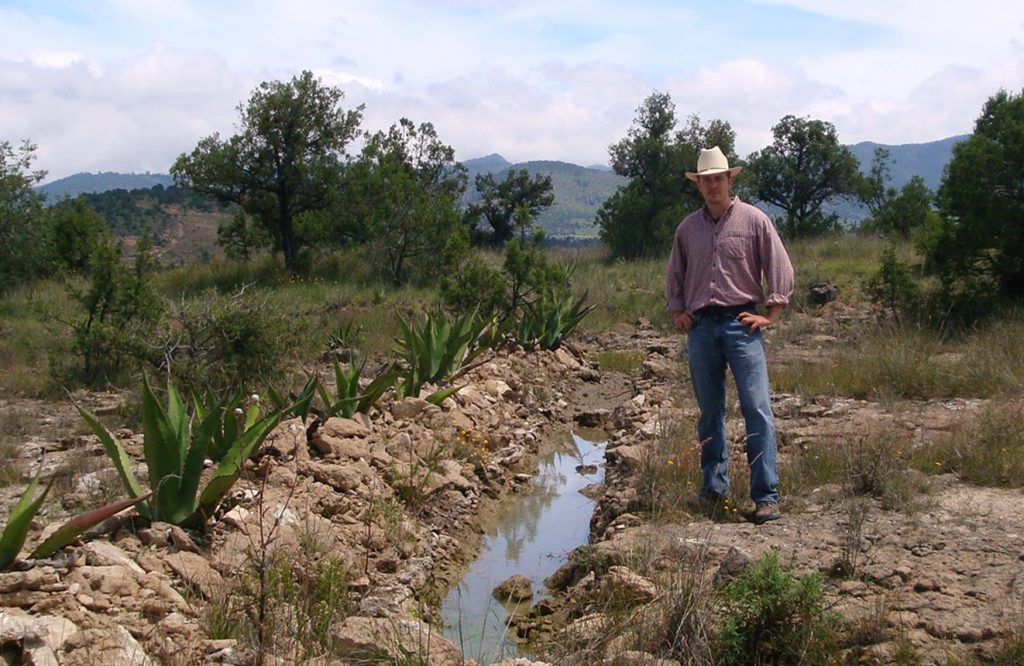Dr. Matthew LaFevor’s research examines agriculture and conservation engineering in Mexico, Latin America, and the Caribbean. He is beginning his second year as assistant professor in the Department of Geography, having recently completed a postdoctoral fellowship from the University of Maryland and a Ph.D. from the University of Texas at Austin. He has spent much of his life living and studying in Mexico where he completed his master’s degree from the University of the Americas-Puebla.
LaFevor also does work in Cuba, Puerto Rico, and the U.S. Virgin Islands. Latin America is “…a fascinating place to study how people use the biophysical environment to grow food,” said LaFevor. His research has been funded by the National Science Foundation, Fulbright-Hays, and the Boren Fellowship for International Study.
LaFevor’s research recently expanded to Puerto Rico and the island of St. John in the U.S. Virgin Islands. “It’s a pleasant place to work…but landscape degradation on those islands is, increasingly with climate change, an important topic,” said LaFevor. He hopes his instruments, installed deep in the gullies of St. John, are still in place after hurricanes Irma and Maria recently swept through.
RECENT ACHIEVEMENTS
In 2016, LaFevor was awarded the Wrigley-Fairchild Prize by the American Geographical Society (AGS).
BACKGROUND
LaFevor came to the field of geography late, having attended an undergraduate school that did not have a geography program. “I’ve always loved maps and the outdoors,” LaFevor explained. “My mom still has some maps I drew when I was a kid, and my brothers and I used to do a lot of Civil War mapping and relic hunting when we were teenagers. After school I lived in Alaska, working in the fishing and landscaping industries, and then in Wyoming for the Game and Fish Department. I knew I needed to be outdoors much of the year, but I wasn’t sure how to make a career of it.” When he learned that some schools offered a graduate degree in geography, it clicked. “That’s what led me to geography,” LaFevor said, “I just always tended to think spatially and always about the outdoors and how we manage the environment.”

PUBLICATIONS
His most recent publication, with Carlos Ramos-Scharrón of the University of Texas and featured in the Journal of Hydrology, is titled “The role of unpaved roads as active source areas of precipitation excess in small watersheds drained by ephemeral streams.” The article examines how unpaved roads in the U.S. Virgin Islands contribute to the runoff that pollutes offshore coral reef systems. LaFevor hopes their findings will inform policy makers on the construction of new roads and runoff mitigation systems. LaFevor has several more publications pending from that research.
IMPACT
LaFevor is currently studying soil and water conservation in national parks in Mexico and how different engineering attempts influence water runoff and infiltration, soil erosion and accretion. Governments around the world are building structures to encourage groundwater infiltration in protected habitats, and many of these are based on the technologies of intensive agriculture. LaFevor evaluates the effectiveness of these systems.
“The biggest and broadest reason it’s important is because climates are changing,” LaFevor said. “We know that demand for water is increasing, not only for agriculture, but from growing populations and urban centers. Without decreases in water demand, we are going to have to work on water supply issues.”